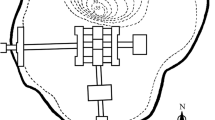Abstract
Known as the four famous carps in China, black carp (Mylopharyngodon piceus), grass carp (Ctenopharyngodon idella), silver carp (Hypophthalmichthys molitrix) and bighead carp (Hypophthalmichthys nobilis) are commercially important fish species with a high production in China. To reveal the relationships between meteorological conditions and the natural spawning behavior of these fishes, we considered six meteorological factors (including wind, rainfall, temperature, air pressure, sunshine hours and humidity) and the weather conditions in 80 spawning events. The results showed that the spawning activities were more likely to be activated in consecutive rainy days or days when weather changed drastically, while the spawning activities showed no tendency for the weather type except consecutive rainy days. Our analyses also showed that the average rainfall in the initial spawning days is higher than that in the spawning time windows (the time from the earliest spawning activity to the latest spawning activity), while other meteorological elements remained at more or less the same values in both time periods; spawning activity tended to happen in days when the average air pressure was going down or the average temperature going up, while the other meteorological elements showed no consistent tendency.

Similar content being viewed by others
References
Committee of freshwater fish culture (1973) Chinese freshwater fish culture, 2nd edn. Science, Beijing
Duan XB, Chen DQ, Li Z (2008) Current status of spawning grounds of fishes with pelagic eggs in the middle reaches of the Yangtze River after impoundment of the Three Gorges Reservior. J Fish Sci China 15(4):523–532
Gutiérrez-Rodríguez C, Williamson CE (1999) Influence of solar ultraviolet radiation on early life—history stages of the bluegill sunfish, Lepomis macrochirus. Environ Biol Fish 55(3):307–319
Levine JS, Macnichol EF Jr (1982) Colour vision in fishes. Sci Am 246:140–149
Luo YM, Wang JM, Zhang ZY (1994) Relationship between eel and meteorological conditions. Zhejiang Meteorol Technol 16(1):10–12
Management committee of fisheries resources of the Yangtze River (1997) Protection and utilize of zoology and environment of the Three Gorges project. Resour Environ Yangtze River 6(2):127–131
Perrin CJ, Rempel LL, Rosenau ML (2003) White sturgeon spawning habitat in an unregulated river: Fraser River, Canada. Trans Am Fish Soc 132:154–165
Pusey BJ, Kennard MJ, Arthington AH (2000) Discharge variability and the development of predictive models relating stream fish assemblage structure to habitat in north-eastern Australia. Ecol Freshw Fish 9:30–50
Qiu SL, Liu SP, Huang MG (2002) Monitoring of spawning sites of four major Chinese carps in the middle sector of Yangtze River. Acta Hydrobiol Sin 26(6):716–718
Survey team of fishery resources along the Yangtze River (1990) Fishery resources of the Yangtze River. Ocean, Beijing
Survey team of spawning grounds of Chinese carps in the Changjiang River (1982) A survey on the spawning grounds of the “four famous Chinese carps” in the Changjiang River after dammed by the key water control project at Gezhouba. J Fish China 6(4):287–305
Wang SY, Liao WG, Chen DQ (2008) Analysis of eco-hydrological characteristics of the four Chinese farmed carps spawning grounds in the middle reach of the Yangtze River. Resour Environ Yangtze River 17(6):298–798
Williamson CE, Metgar SL, Lovera PA (1997) Solar ultraviolet radiation and the spawning habitat of YellowPerch, Perca Flavescens. Ecol Appl 7(3):1017–1023
Wu XQ, Cong WZ, Ye QM (1999) Studies on relationship between meteorological factor and asphyxia of pond fishes. Shangdong Fisheries 16(1):23–26
Yu ZT (1985) Spawning grounds of the four famous Chinese carps after dammed of the Gezhouba water control project. Association of Chinese fishes. Ichthyology symposium, 4th edn. Science, Beijing
Zhang JF, Bai YP, Yu JL (2006) Forecast of red tide in the South China Sea by using the variation trend of hydrological and meteorological factors. Mar Bull 8(2):60–74
Zhang H, Wei QW, Du H (2008) Relationship between meteorological conditions and natural reproduction behavior of Chinese Sturgeon. Sci Technol 26(17):42–48
Zhou XQ, Niu CJ, Li QF (1999a) Influence of light on behavior of aquatic species. Chin J Zool 34(2):45–48
Zhou XQ, Niu CJ, Li QF (1999b) Effects of light on physiological activities of fishes. Chin J Ecol 18(6):59–61
Acknowledgements
This paper is supported by the national science and technology plan subject (2008BAB29B09), national nonprofit institute research grant of Freshwater Fisheries Research Center, CAFS, enhancement and releasing of freshwater aquatic organism and ecological restoration (200903048) and the public welfare special expenses of the Ministry of water resource, China (200701029).
Author information
Authors and Affiliations
Corresponding author
Rights and permissions
About this article
Cite this article
Wang, K., Liao, W., Li, C. et al. Relationship between meteorological conditions and natural reproduction behavior of the four famous Chinese carps. Environ Biol Fish 89, 135–142 (2010). https://doi.org/10.1007/s10641-010-9702-1
Received:
Accepted:
Published:
Issue Date:
DOI: https://doi.org/10.1007/s10641-010-9702-1




